A steel plate of thickness h has the shape of a square whose side equals l, with h<<l. The plate is rigidly fixed to a vertical axle OO which is rotated with a constant angular acceleration β (figure). Find the deflection λ, assuming the sagging to be small.
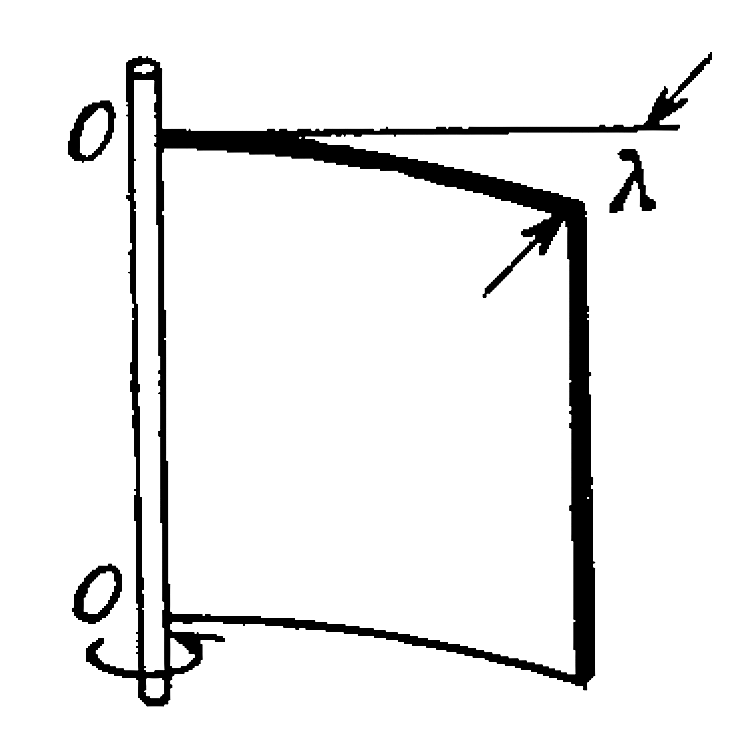
The deflection of the plate can be noticed by going to a co-rotating frame. In this frame each element of the plate experiences a pseudo force proportional to its mass. These forces have a moment which constitutes the bending moment of the problem. To calculate this moment we note that the acceleration of an element at a distance ξ from the axis is a=ξβ and the moment of the force exerted by the section between x and l is
N=ρlhβl∫xξ2dxi=13ρlhβ(l3−x3).
From the fundamental equation
EId2ydx2=13ρlhβ(l3−x3).
The moment of inertia I=+h/2∫−h/2z2ldz=lh312.
Note that the natural surface (i.e. the surface which contains lines which are neither stretched nor compressed) is a vertical plane here and z is perpendicular to it.
d2ydx2=4ρβEh2(l3−x3). Integrating
dydx=4ρβEh2(l3x−x44)+c1
Since dydx=0, for x=0, c1=0. Integrating again,
y=4ρβEh2(l3x22−x520)+c2
c2=0 because y=0 for x=0
Thus λ=y(x=l)=9ρβl55Eh2
Related Playlists
- BOOK - IE IRODOV, LA SENA & SS KROTOVCHAPTER - PHYSICAL FUNDAMENTALS OF MECHANICSEXERCISE - Hydrodynamics25videos
PHYSICAL FUNDAMENTALS OF MECHANICS
- BOOK - IE IRODOV, LA SENA & SS KROTOVCHAPTER - PHYSICAL FUNDAMENTALS OF MECHANICSEXERCISE - Relativistic Mechanics49videos
PHYSICAL FUNDAMENTALS OF MECHANICS
- BOOK - IE IRODOV, LA SENA & SS KROTOVCHAPTER - PHYSICAL FUNDAMENTALS OF MECHANICSEXERCISE - Dynamics Of A Solid Body56videos
PHYSICAL FUNDAMENTALS OF MECHANICS
- BOOK - IE IRODOV, LA SENA & SS KROTOVCHAPTER - OSCILLATIONS AND WAVESEXERCISE - Electromagnetic Waves, Radiation36videos
OSCILLATIONS AND WAVES
- BOOK - IE IRODOV, LA SENA & SS KROTOVCHAPTER - THERMODYNAMICS AND MOLECULAR PHYSICSEXERCISE - Transport Phenomena38videos
THERMODYNAMICS AND MOLECULAR PHYSICS
Similar Questions
A midpoint of a thin uniform rod AB of mass m and length l is rigidly fixed to a rotation axle OO′ as shown in figure. The rod is set into rotation with a constant angular velocity ω. Find the resultant moment of the centrifugal forces of inertia relative to the point C in the reference frame fixed to the axle OO′ and to the end.
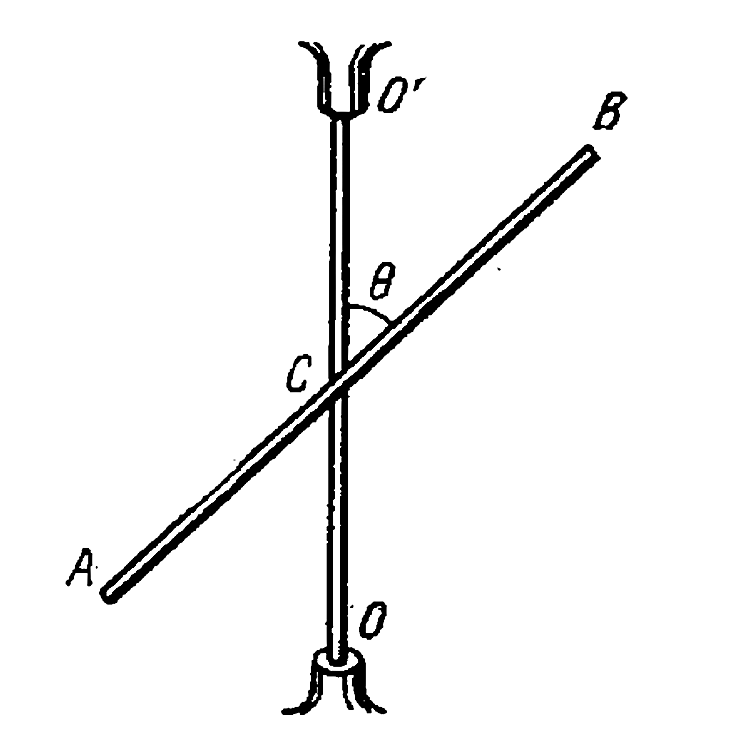 View Solution
View SolutionA square plate of side length 2m has a groove made in the shape of two quarter circles joining at the centre of the plate. The plate is free to rotate about vertical axis passing through its centre. The moment of inertia of the plate about this axis is 4kg−m2. A small block of mass 1 kg enters the groove at end A travelling with a velocity of 2/s parallel to the side of the square plate. The block move along the frictionless groove of the horizontal plate and comes out at the other end B with speed V. Find V assuming that width of the groove is negligible.
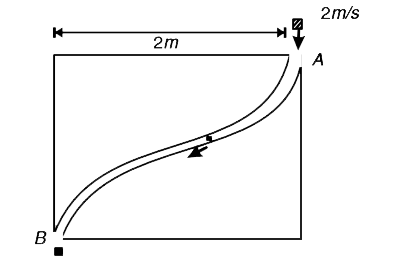 View Solution
View SolutionA device (figure) consists of a smooth L-shaped rod located in a horizontal plane and a sleeve A of mass m attached by a weight less spring to a point B. The spring stiffness is equal to x. The whole system rotates with a constant angular velocity ω about a vertical axis passing through the point O. Find the elongation of the spring. How is the result affected by the rotation direction?
 View Solution
View SolutionThe middle of a uniform rod of mass m and length l is rigidly fixed to a vertical axis OO′ so that the angle between the rod and the axis is equal to θ (figure). The ends of the axis OO′ are provided with bearings. The system rotates without friction with an angular velocity ω. Find:
(a) the magnitude and direction of the rod's angular momentum M relative to the point C, as well as its angular momentum relative to the rotation axis,
(b) how much the modulus of the vector M relative to the point C increases during a half-turn,
(c) the moment of external forces N acting on the axle OO′ in the process of rotation.
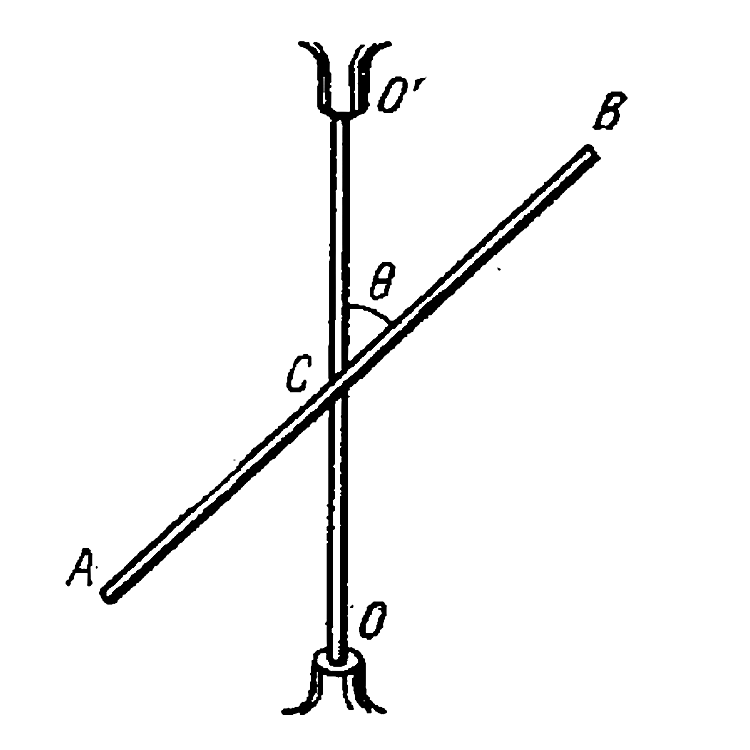 View Solution
View SolutionA rectangular conducting loop B has its side lengths equal to b and a(<<b). In the plane of the loop there is another very small loop A in shape of a square of side length x. Loop A is placed symmetrically with respect to B with its centre at a distance a from one of its longer side (see Figure). There is a current (i) in loop A which is made to increase at a constant rate of didt=αAs–1. Calculate the emf induced in the bigger loop.
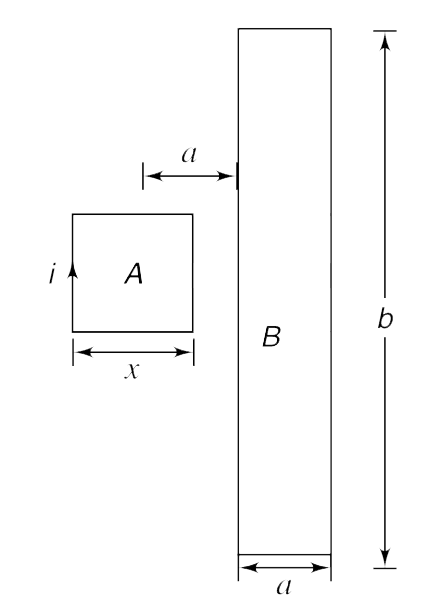 View Solution
View SolutionA uniform disc of mass M and radius R is rotating freely about its central vertical axis with angular speed w0. Another disc of mass m and radius r is free to rotate about a horizontal rod AB. Length of the rod AB isL(<R) and its end A is rigidly attached to the vertical axis of the first disc. The disc of mass m, initially at rest, is placed gently on the disc of mass M as shown in figure. Find the time after which the slipping between the two discs will cease. Assume that normal reaction between the two discs is equal to mg. Coefficient of friction between the two discs is μ.
 View Solution
View SolutionA very small circular loop of radius a is initially coplanar & concentric with a much larger circular loop of radius b(<<a).A constant current I is passed in the large loop which is kept fixed in space & the small loop is rotated with constant angular velocity ω about a diameter.The resistance of the small loop is R & its inductance is negligible The induced emf in the large loop due to current induced in smaller loop as a function of time is equal to 1x(πa2μ0ωb)2Icos2ωtR.Find out value of x.
View SolutionIn the arrangement shown in figure the sleeve M of mass m=0.20kg is fixed between two identical springs whose combined stiffness is equal to x=20N/m. The sleeve can slide without friction over a horizontal bar AB. The arrrangement rotates with a constant angular velocity ω=4.4rad/s about a vertical axis passing through the middle of the bar . Find the period of small oscillations of the sleeve. At what values of ω will there be no oscillations of the sleeve ?
 View Solution
View SolutionIn the arrangement shown in figure the sleeve M of mass m=0.20kg is fixed between two identical springs whose combined stiffness is equal to x=20N/m. The sleeve can slide without friction over a horizontal bar AB. The arrrangement rotates with a constant angular velocity ω=4.4rad/s about a vertical axis passing through the middle of the bar . Find the period of small oscillations of the sleeve. At what values of ω will there be no oscillations of the sleeve ?
 View Solution
View SolutionThe circuit shows a resistance R=0.01Ω and inductance L=3mH connected to a conducting rod PQ of length I=2m which can side on a perfectly conducting circular arc of radius I with its centre at P. Assume that friction & gravity are absent and a constant uniform magnetic field B=0.1T exists as shown in the figure. At t=0 the circuit is switched on and simultaneously an external torque is applied on the rod so that it rotates about P with a constant angular velocity ω=2 rad/sec. Find the magnitude of this torque (in N−m) at t=0 (0.3 In2) second
 View Solution
View Solution

